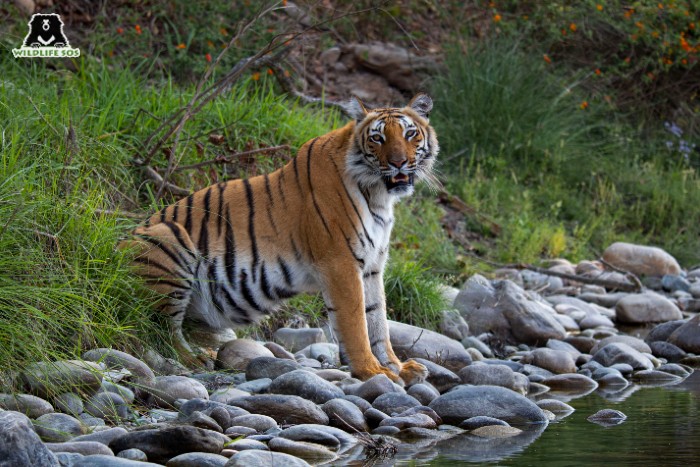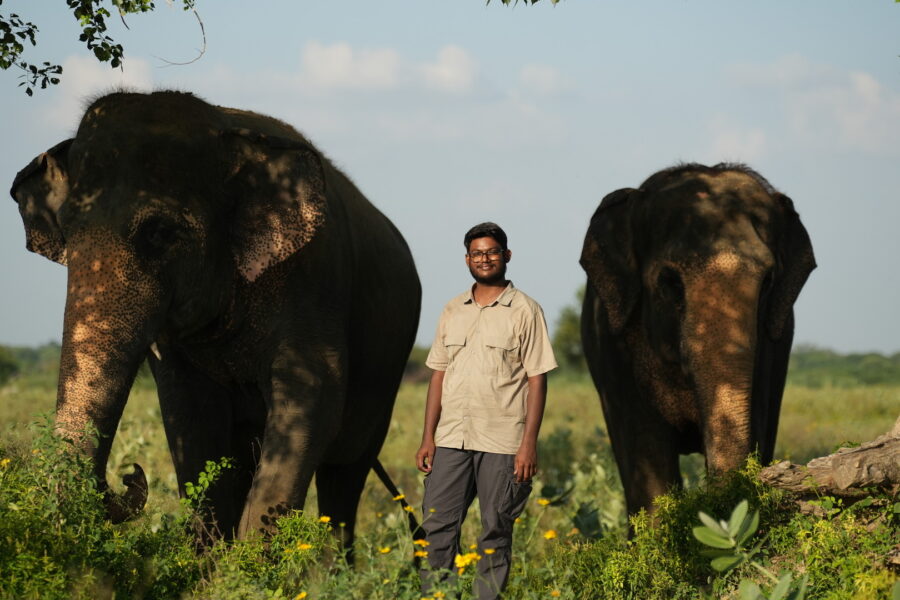A leopard never changes its spots – or does it? Scientists definitely believe that they do.
When a leopard cub grows up, its spots evolve to become bigger rosette markings. To a keen eye, the rosettes on a leopard’s body are different from those of a jaguar or a snow leopard, the spots of a cheetah, and definitely, the stripes of a tiger. Even lion cubs are born with faded spots that disappear while growing up!
Fur patterns are the easiest way to distinguish one species of cat from another, but how and when did they evolve? There is no sure way to tell. However, scientists hypothesise several factors that determine the appearance of every feline , whether it is the majestic tiger on the cover of a wildlife magazine, or the tabby cat at home determined to shred the same publication! On this International Cat Day, let us look at how patterns evolved in big cats and their different varieties!
Evolution of Cats
Cats belong to the family Felidae, which has three divisions, namely, big cats (Panthera), small cats (Felis) and the cheetah (Acionyx). These are the only feline genera living today. Extinct groups of cats include the famous sabre-tooth cats (Smilodon), which belonged to a subfamily Machairodontinae (rightly translated from Greek as “dagger-tooth”).
All cats can be classified under a group Feliformia, which also consists of hyenas, civets and mongooses and their ancestors. Have you noted the patterns on a hyena’s coat or the markings of a palm civet or meerkat? Evolution has indeed granted animals in the wild with spectacularly patterned pelts!
While calling feline coat patterns as “one of [the] unsolved biological mysteries”, Dr. Gregory Barsh and his team from Stanford University have delved into the reasons behind patterned fur in domestic cats. Their studies have revealed a dominant gene – named DKK4 – that governs the formation of markings in felines, and perhaps all mammals.
However, DKK4 was one piece in the jigsaw puzzle. Other genes were also responsible for what kind of pattern a cat develops:
1. Spots: Cheetahs as well as juvenile leopards and lions have spots distributed across their bodies. They are also common in smaller cats like servals, lynxes and rusty-spotted cats.
2. Rosettes: These are round, often rose-shaped circles which mark the pelts of leopards, jaguars, snow leopards, and clouded leopards.
3. Stripes: The tiger is the only extant wild cat to possess stripes.
4. Plain: Lions and cougars have tawny pelts without noticeable patterned fur.
Spotting the Pattern
Cats in the wild have naturally patterned fur that helps them blend in with their surroundings. A study in The Proceedings of the Royal Society B journal revealed that their environment was another major factor in understanding the markings on a particular feline’s coat. The team examined the patterns, habitats, history and hunting tendencies of 35 distinct species of large cats.
Dark-coloured coats are common to leopards and jaguars. Their unevenly patterned coats consisting of large rosettes provide excellent camouflage in the dappled light of woodland habitat. This would then allow them to not only hunt at any time of day or night, but also inhabit a wide range of environments.
Contrarily, cats that move on the ground have solid-coloured coats. These felines reside in open settings, lacking heavy forest cover such as deserts or plains. Lions and cougars are the most prominent examples of this. However, melanistic (black) or albino (white) variations of these cats have more difficulty in blending with their surroundings.
Of course, gaps regarding our understanding of these patterns still remain. The presence of how stripes emerged in tigers remains a mystery. However, these long patterns have helped the large cats stalk through the tall grass of their habitat.
When we speak about patterns of cats within their specific habitat, spots of a cheetah make little sense as well. This is because it dwells in plains that have only a few trees. Perhaps the fastest running animal’s pattern does not affect it’s lifestyle… or so we can speculate! Ongoing studies on pattern evolution provide more insight into this intriguing subject.
Marked for Extinction
Cats have been able to take advantage of their patterns. However, what had once helped cats blend in well and be effective hunters, has now led to them becoming hunted. From the phantom of the Himalayas that is the snow leopard, to the elusive clouded leopard, and from the large tiger to the smallest rusty-spotted cat, felines everywhere find themselves staring at a poacher’s gun.

Many of them find themselves hunted for their bones, believed to have medicinal value. Contrarily, others meet their end in sites prone to human-animal conflict. Tiger skins become transformed into rugs or luxurious home decor, as symbols of wealth and status.
Due to extensive hunting by affluent members of both the British elite and native households, the number of Bengal tigers fell drastically. However, focussed efforts of the Project Tiger campaign has brought up the numbers. Now, these cats number 3,167 as per the tiger census conducted in 2022.
And yet, the global demand for tiger bones, skin, and teeth continues to promote the establishment of illicit smuggling networks in the country.
Saving the Cats of India
Based on effective intel from our anti-poaching squad ‘Forest Watch’, Wildlife SOS collaborated with the Wildlife Crime Control Bureau (WCCB) earlier this year to apprehend six poachers in Arasur village located in the Sathyamangalam forests. The raid recovered a 10-foot-long tiger skin as well as bones and a skeleton from a tiger and a leopard.
Following a series of interrogations, a team consisting of the Tamil Nadu WCCB, the forest department, the police, and Wildlife SOS found and disassembled these poachers’ active hunting devices.
It was too late to save these animals. However, there are others just like them that face such threats in the wild! All cats have only one precious life, not nine, and you can help us save it. Become a monthly donor to Wildlife SOS and contribute towards the efforts of conserving India’s awe-inspiring felines.





